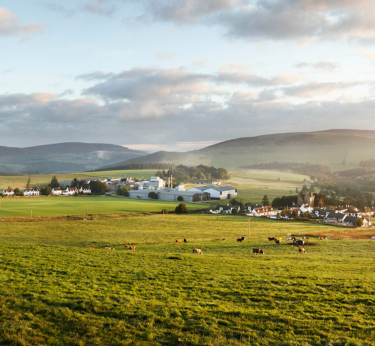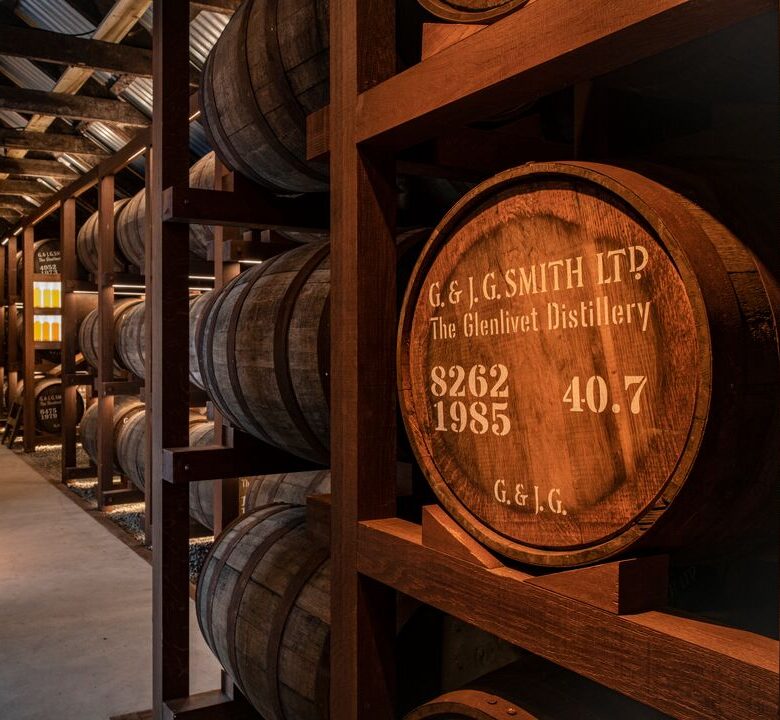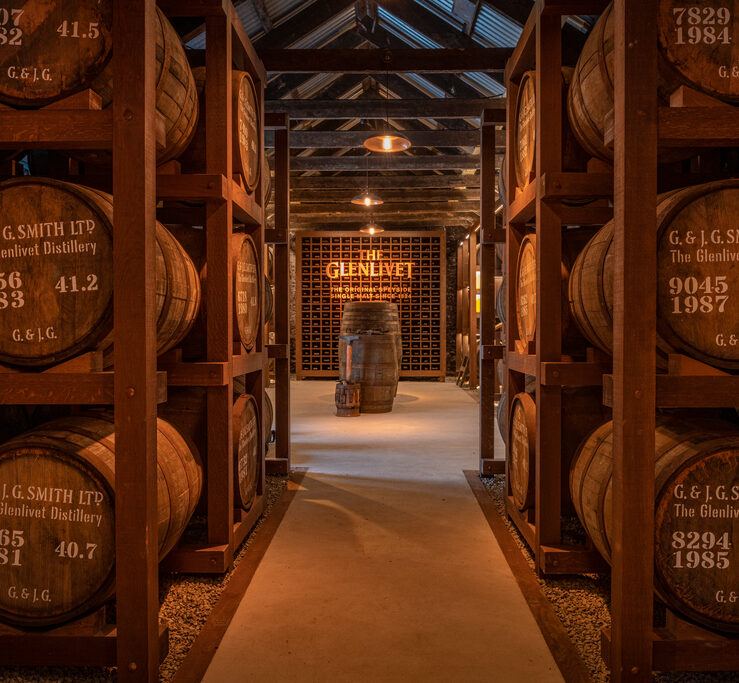
Whisky finds itself in many places before it lands on the tongue of an enthusiast. It is transferred to copper stills during distillation, to oak vessels during maturation, to bottles once aged to perfection and then into your glass to be enjoyed.
Each of these stages plays an important role in how scotch is made and why it is a much-loved spirit. However, the cask selection is a crucial step in determining the flavour, colour, and aroma of whisky.
So why is the cask sometimes seemingly not mentioned at all? Why do some producers talk about barrels instead? Let’s clear up the confusion by exploring the difference between whisky barrels and casks where you’ll come to find that they are kindred containers.
What is the difference between barrels and casks?
While these terms often get tossed around interchangeably, there’s a crucial distinction to be made. Think of “cask” as the broad category encompassing any wooden vessel used for maturing whisky. Now, picture a barrel as a specific size within that category, often associated with distinct characteristics and volumes.
In essence, every barrel is a cask, but not every cask is a barrel. Whisky casks come in various shapes and sizes, and with differing histories, each contributing its own flavour nuances to the ageing process. So, the next time you hear someone mention barrels or casks, remember: it’s not just semantics—it’s what the essence of the whisky itself hinges on.
What are the different whisky cask sizes?
When it comes to whisky casks, size does matter. Each size imparts its own unique characteristics to the ageing spirit during the cask maturation process, which is why producers will carefully consider which type of cask they want to use.
There are many different cask sizes with some being more prominent across the pond in the USA, while others are used more frequently in the whisky regions of Scotland.
Here’s a rundown of the most common whisky cask sizes:
Gorda
These huge casks, made from American oak, hold up to 700 litres. They are traditional to the American whiskey industry but aren’t often seen in scotch production as their capacity falls too close to the maximum permitted cask size.
Puncheon
Puncheons range in size from 500 to 700 litres. These larger casks are often used for bulk ageing or blending. While less common in scotch whisky production, puncheons can be found in certain distilleries seeking to experiment with different ageing techniques and whisky types.
Butt
The big daddy of whisky casks, the butt holds a hefty 500 litres of the amber nectar. Traditionally used for sherry ageing, these casks are prized for their generous capacity and ability to impart rich, fruity flavours to the whisky.
Port pipes
Port pipes are on the large end of casks, holding 350 litres or more of liquid. As the name suggests, these casks were originally used for ageing port wine. When repurposed for whisky ageing, port pipes infuse the spirit with rich, fruity flavours and a deep ruby hue.
Standard barrel/hogshead
Half the size of a butt but still packing a punch, the hogshead holds 250 litres of whisky. Often crafted from repurposed bourbon barrels, hogsheads offer a balanced combination of oakiness and sweetness, making them a favourite among distillers.
American standard barrel
This classic barrel holds 200 litres of whisky and is one of the most well-known types of oak cask. These versatile vessels are commonly used in both bourbon and Scotch whisky production, lending a balanced mix of oak, vanilla, and caramel notes to the ageing spirit.
Quarter cask
A quarter the size of a butt, holding 125 litres, these smaller casks are prized for their ability to impart robust flavours in a shorter period. They’re commonly used for ageing scotch whisky, particularly in traditional distilleries seeking to replicate historical methods. Quarter casks can also be used to describe 50-litre vessels made to a quarter of the size of but to the same proportions as an American standard barrel.
Octave
Small but mighty, the octave holds a mere 50 litres of whisky. Despite its diminutive size, this cask accelerates the ageing process, thanks to its increased surface area-to-volume ratio. Expect intense flavours, a rapid maturation timeline and a higher percentage of angel’s share whisky.
Blood-tub
The blood-tub is one of the smallest casks used in whisky ageing, typically holding between 30 to 40 litres of liquid. While relatively uncommon in commercial whisky production, blood-tubs are occasionally used for experimental ageing or in small-batch productions where a more intense interaction between the whisky and wood is desired. Most of the time, they are used as private casks for an individual.
What does single barrel mean?
Now that we’ve demystified cask sizes, let’s tackle another whisky term: single barrel. When you encounter “single barrel” on a whisky label, it normally signifies that the spirit was drawn from one individual cask, rather than being blended with others. This designation guarantees a singular flavour profile, shaped by the unique characteristics of that particular cask.
Single barrel vs double barrel
If single barrel refers to whisky that has originated from one cask, then double barrel must mean that the whisky is a blend of alcohol from two casks, right? Well, sometimes, but not always.
Due to a bit of ambiguity around the legal definitions of single barrel and double barrel, double barrel can also be used to describe whisky that has matured for a period in one cask before being transferred to a second one. You may alternatively see the terms single cask, double cask and triple cask used by producers to highlight how many casks the whisky has been transferred into.
Now that you’re clued up on the difference between whisky barrels and casks, there are plenty more whisky facts you can discover to help deepen your appreciation of the spirit. Learn about single malt vs double malt and what sets them apart or take things right back to the beginning by finding out what whisky is made from.



